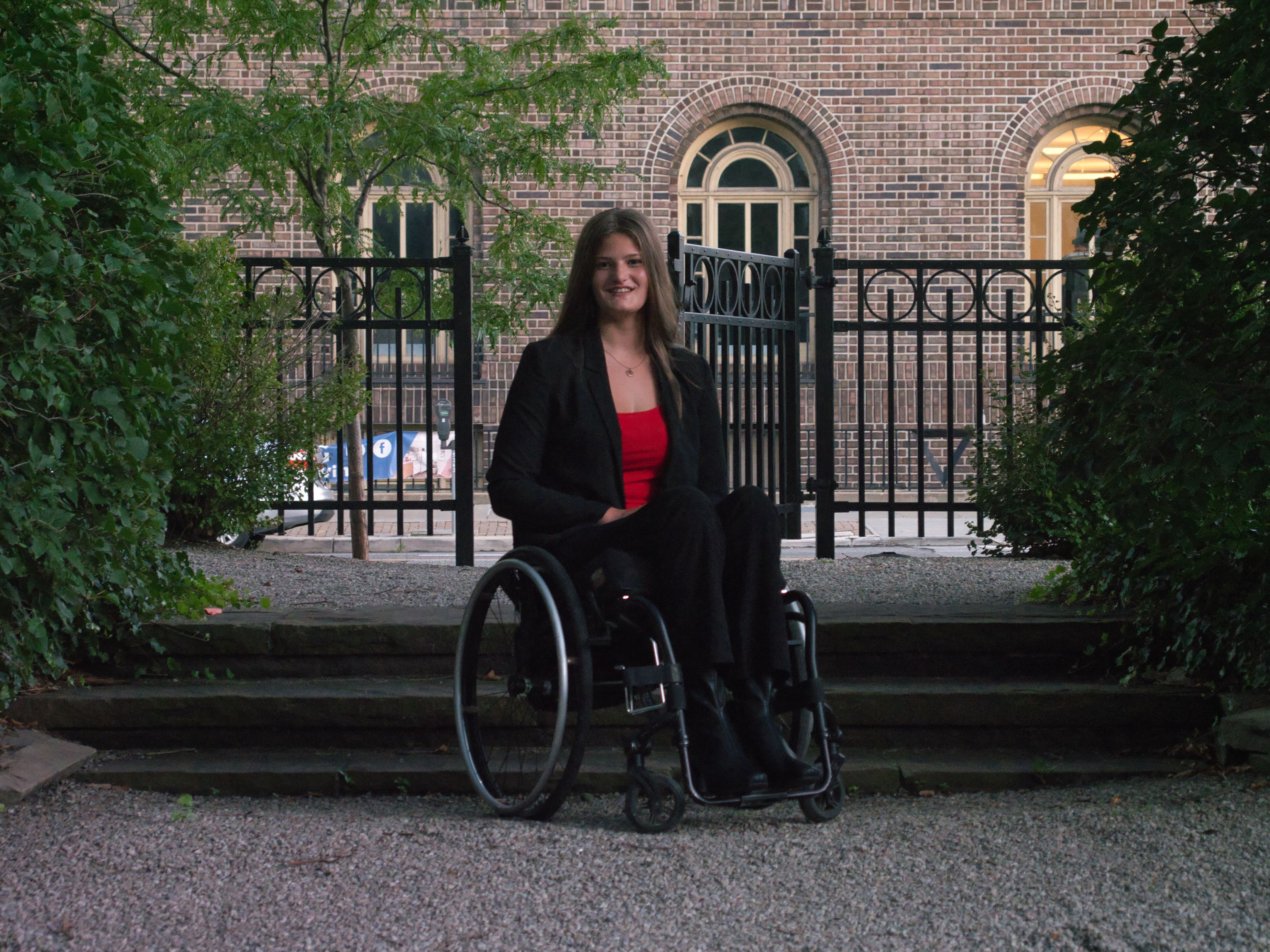Device Technologies and Biomedical Robotics
(K-421) Interuniversity Team Based Design of Wheelchair Component Advancements through the Mentoring for INnovative Design Solutions Scholars Program

Sierra Andrews
Student
Milwaukee School of Engineering
Nekoosa, Wisconsin, United States- AW
Ava Wang
Student
Stevens Institute of Technology, United States - CL
Catherine Lacey
Student
Louisiana Tech University, United States - KS
Kaitlyn Sallee
Student
Washington University in St. Louis, United States - NP
Nick Pham
Student
Boston University, United States - SA
Saileen Ahmad
Student
CUNY City College, United States - BV
Bhavit Vora
Industry Mentor
Johnson and Johnson, United States - WM
Walter L. Murfee
ASSOCIATE PROFESSOR
University of Florida, United States
Presenting Author(s)
Co-Author(s)
Last Author(s)
During the 2022-2023 academic year, we participated in the Mentoring for INnovative Design Solutions (MINDS) Scholars Program. Sponsored by Alpha Eta Mu Beta, the goals of the design program are to provide students with the opportunity to collaborate with peers and mentors across the country on an open-ended medical device design project for people with disabilities. The program focuses on building necessary engineering design skills, including 3 key considerations that are not usually stressed in coursework projects. For our project we designed wheel chair accessories to assist in everyday tasks. Over a quarter of Americans live life with one or more disabilities and of that quarter 13.7% of people have a disability that creates severe mobility issues and requires assistance from canes, walkers, wheelchairs, and other mobility devices [1]. The first modern day, foldable wheelchair was invented in 1933 [2] and it significantly improved the overall quality of life for a wheelchair user in 1933. While the modern day wheelchair has made significant improvements in the last 90 years, there are still improvements that need to be made for an improvement in the quality of life for wheelchair users in 2023. The objective of this abstract will be to showcase our designs and our culminating proof-of-feasibility design.
Materials and Methods::
Our team consisted of 6 students from 6 universities: the Milwaukee School of Engineering, Washington University in St. Louis, CUNY City College, Stevens Institute of Technology, Boston University, and Louisiana Tech University. We also had an academic mentor from the University of Florida and an industry mentor from Johnson and Johnson. The students ranged from sophomores to seniors in college. Over the 6-month program, our team virtually met bi-weekly and design activities included problem definition, prior art searches, identification of design requirements, brainstorming, concept selection, and detailed component design. We also discussed meeting with technology transfer experts, and meeting faculty with start-up experience. The functional requirements for the design were to be easy to operate, low maintenance, and help increase quality and ease of life, as well as safety and security. In total our team met approximately 12-15 times and the design experience culminated with designs for 3 different components and attachments for wheelchairs.
Results, Conclusions, and Discussions::
Results:
We started the design process with focusing on manual designs such as creating an improved tray that can be attached and detached by the user and that folds in the space between the wheel and the cushion of the wheelchair (Figure 1--blue component). The tray would have a charging port inside that could be connected to a portable battery which could be placed in the hollow inside of the tray (Figure 2). We then created a smaller bag that can be stored in the space between the second wheel and the cushion (Figure 1--teal component) that could store small items such as phones, keys, wallets, and other items (Figure 3). Our final design was a hybrid component that generates and contains electricity from the manual pushing of a wheelchair (Figure 1--purple and green components). The average wheelchair user rotates their wheel roughly 900 times per day [3]. When combined with a gearbox that converts a singular wheel rotation into 1000 generator rotations the generator can produce the equivalent of 900kW generator rotations. Every 1,000 generator rotations produces around 0.5W, which means that the wheelchair user would generate approximately 900W of electrical energy a day. This energy would then be stored in a battery for the user to use whenever needed (Figure 4).
Discussion:
Our designs highlight the lack of safety and security that are found in wheelchair attachments. It would be simple to grab items from the back of someone's wheelchair or their lap when their attention is diverted. Our hope is that the bag and tray design help limit that risk. Additionally, while there are electric wheelchair attachments that help people go up hills, they can be incredibly bulky and hard to maneuver. Our design is unique because it is a small design, both in weight and size and wouldn't limit the user's movements in the wheelchair.
Conclusion:
Overall, our designs highlight areas of improvement we observed in the modern day wheelchair and while we have a long way to go, these designs are a step in the right direction--the direction of accessibility and equality.
Acknowledgements (Optional): : I would like to acknowledge BMES for the opportunity to work within the MINDS program as well as the knowledge and experience I gained from partaking in the program. I would also like to thank Dr. Murphy and Mr. Vora for their assistance and instruction while working on this project.
References (Optional): :
[1] “Disability Impacts All of Us Infographic.” Centers for Disease Control and Prevention, 15 May 2023
[2] Baars, Lizeldi. “When Was the First Wheelchair Invented?” Blue Badge Australia, 27 Dec. 2022
[3] Togni, Reto, et al. “Turning in Circles: Understanding Manual Wheelchair Use towards Developing User-Friendly Steering Systems.” Frontiers in Bioengineering and Biotechnology, 17 Feb. 2022
